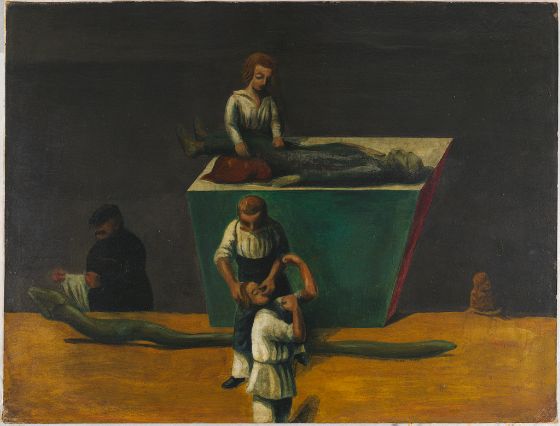The Harvard Art Museums have trained scores of museum leaders who have gone on to make remarkable contributions to the curatorial, conservation, and education fields. We offer a number of opportunities for emerging graduate and postgraduate scholars interested in the production and presentation of original scholarship within the museum context. In this regular series of interviews, we catch up with these museum professionals to see where they are now.
Nathan Timpano, Stefan Engelhorn Curatorial Fellow at the Busch-Reisinger Museum, 2009–10
Q What is your current position?
A I am Assistant Professor of Art History at the University of Miami. I teach graduate and undergraduate courses and conduct research on European modernism and Latin American modernism, with an emphasis on German and Austrian expressionism and the Cuban avant-garde.
Q What have you gone on to do following the completion of your fellowship at the Harvard Art Museums?
A I served as a Visiting Assistant Professor of Art History at the University of Miami for two years (2010–12) before being hired as a tenure-track assistant professor in fall 2012.
In 2011, I participated in the Blaue Reiter Centenary Conference at the Tate Modern, and I’m currently working with colleagues on an edited volume of essays related to Der Blaue Reiter—the early 20th-century German expressionist art group. I also published an article in the Oxford Art Journal (December 2012) that was the culmination of an independent project that I was working on during my time at the Harvard Art Museums. The article, “Nazi vs Niebelung: Satrising National Socialism at Harvard’s German Museum,” examines the iconography and symbolism of a series of frescoes painted by Lewis Rubenstein in the 1930s for Harvard’s Adolphus Busch Hall.
In January 2013 I received a Robert Gore Rifkind Scholar-in-Residence Research Grant at the Rifkind Center for German Expressionist Studies at the Los Angeles County Museum of Art (LACMA) for work on a book project. I was recently awarded a Faculty Research Fellowship at the Center for the Humanities within the College of Arts & Sciences at the University of Miami, and will therefore take a leave from teaching in spring 2014 to complete my current research projects on German and Austrian modern art.
Q How did your training at the Harvard Art Museums help you to prepare for the work that you are doing now?
A My training at the museums provided me with the highest standard of museum professionalism. Under Laura Muir’s expert guidance (Laura Muir is the Assistant Curator of the Busch-Reisinger Museum), I gained greater insight into the curatorial process by working in one of the world’s greatest university art museums. My experience was the perfect balance between direct supervision and independent research, which allowed me to work on and develop various projects during my fellowship at the Busch.
I recently organized an exhibition titled Pan American Modernism: Avant-Garde Art in Latin America and the United States at the University of Miami’s Lowe Art Museum. The exhibition, which opened in June of this year, has been more than two years in the making and draws upon works from the Lowe’s permanent collection of modern and postmodern art.
Having worked on the Lyonel Feininger: Photographs online research site during my time at the Harvard Art Museums, I was given the opportunity to hone my curatorial skills with archival materials in the Busch-Reisinger’s permanent collection, a project that in many ways prepared me for my current and ongoing curatorial projects at the Lowe.
Q Was there an experience in your training at the Harvard Art Museums that you found particularly powerful?
A While much of my experience at the museums was insightful and beneficial, I was particularly pleased to participate in an acquisition meeting, in which curators and I presented potential new works to Director Tom Lentz for consideration. Laura Muir asked me to present Heavenly and Earthly Love, an oil painting by the German surrealist Max Ernst—a work that we had analyzed via infrared technology at the Straus Center for Conservation and Technical Studies. The entire process of researching the history, iconography, and symbolism of the piece was extremely enjoyable, and yet I have to admit that I was still somewhat nervous when it came time to present the work to Tom! In the end, the museums acquired the painting, which I think strengthens the Busch-Reisinger’s permanent holdings.



